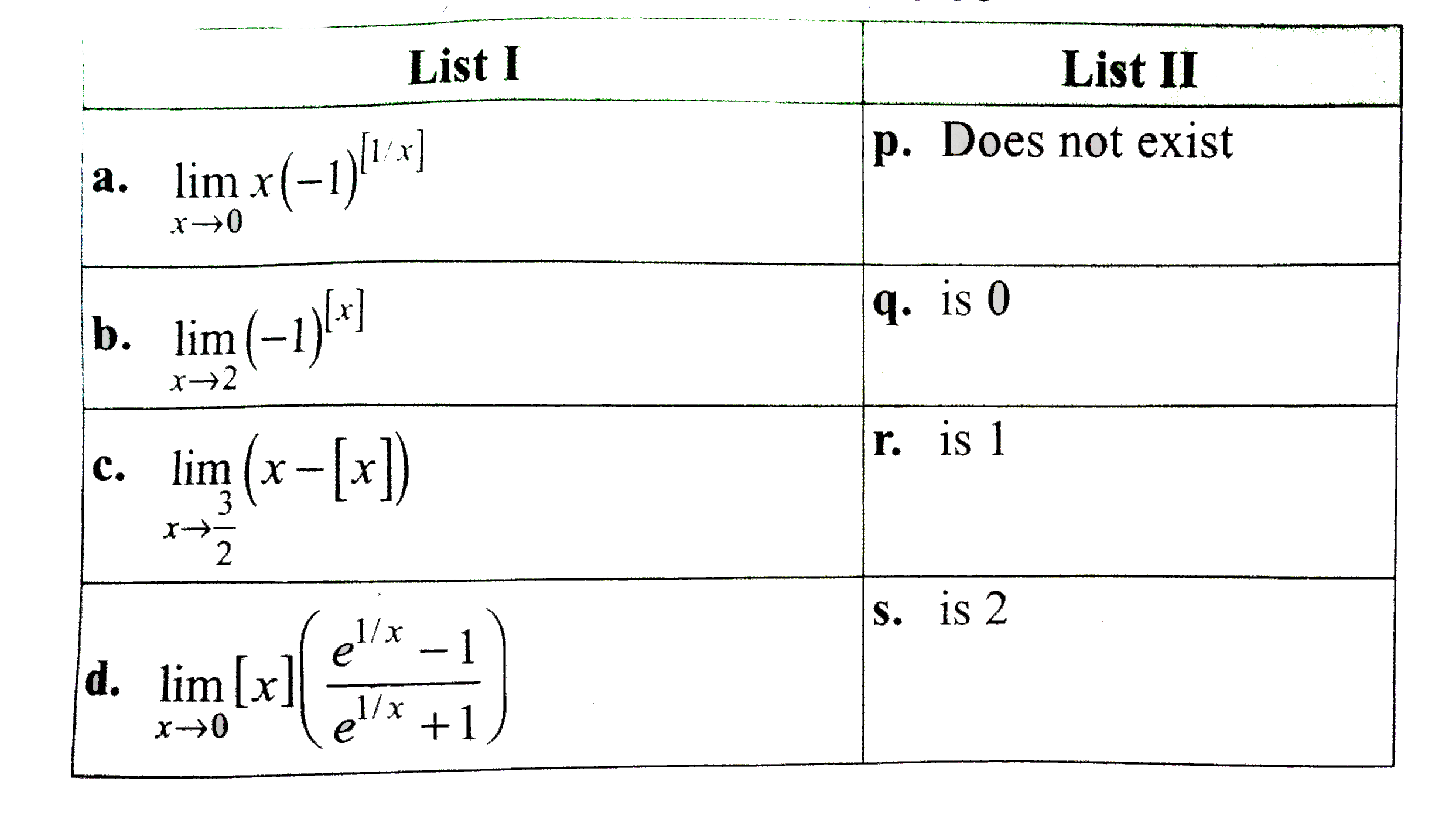The balance sheet for ATP production in glycolysis has been given below. Select the option which correctly fills up the blanks for P,Q,R and S. ['X' stands for 'nil'].
StepsATPUtilisationATPProduction1.Glucose rarrGlucose-6-phosphatePX2.Fructose-6-phosphate→Fructose-1,6-bisphosphate1Q3.1.3−bisphosphoglyceric acid→3−Phosphoglyceric acidXR4.2−Phosphenol pyuvic acid→Pyruvic acidS2
PQRS1XX2
PQRS1X2X
PQRS21X1
PQRSX12X
The correct Answer is:b
To solve the question regarding the balance sheet for ATP production in glycolysis, we will analyze each step of the glycolysis pathway and determine the values for P, Q, R, and S.
1. Step 1: Glucose to Glucose-6-phosphate
- In this step, 1 ATP is utilized to convert glucose to glucose-6-phosphate.
- Since no ATP is produced in this step, we denote this as X.
- Therefore, P = 1 (ATP utilized) and X = 0 (ATP produced).
2. Step 2: Fructose-6-phosphate to Fructose-1,6-bisphosphate
- Similar to the first step, this conversion also utilizes 1 ATP.
- Again, no ATP is produced in this step, so we denote this as X.
- Therefore, Q = X (ATP produced) which is 0, and we already know that 1 ATP is utilized.
3. Step 3: 1,3-bisphosphoglyceric acid to 3-phosphoglyceric acid
- In this step, 2 ATP are produced from the conversion of 1,3-bisphosphoglyceric acid to 3-phosphoglyceric acid.
- No ATP is utilized in this step.
- Therefore, R = 2 (ATP produced) and X = 0 (ATP utilized).
4. Step 4: Phosphoenolpyruvic acid to Pyruvic acid
- In this final step, 2 ATP are produced from the conversion of phosphoenolpyruvic acid to pyruvic acid.
- No ATP is utilized in this step.
- Therefore, S = 2 (ATP produced) and X = 0 (ATP utilized).
Summary of Values:
- P = 1
- Q = 0 (X)
- R = 2
- S = 2
Final Answer:
The correct values to fill in the blanks for P, Q, R, and S are:
- P = 1
- Q = 0 (X)
- R = 2
- S = 2
- In this step, 1 ATP is utilized to convert glucose to glucose-6-phosphate.
- Since no ATP is produced in this step, we denote this as X.
- Therefore, P = 1 (ATP utilized) and X = 0 (ATP produced).
- Similar to the first step, this conversion also utilizes 1 ATP.
- Again, no ATP is produced in this step, so we denote this as X.
- Therefore, Q = X (ATP produced) which is 0, and we already know that 1 ATP is utilized.
- In this step, 2 ATP are produced from the conversion of 1,3-bisphosphoglyceric acid to 3-phosphoglyceric acid.
- No ATP is utilized in this step.
- Therefore, R = 2 (ATP produced) and X = 0 (ATP utilized).
- In this final step, 2 ATP are produced from the conversion of phosphoenolpyruvic acid to pyruvic acid.
- No ATP is utilized in this step.
- Therefore, S = 2 (ATP produced) and X = 0 (ATP utilized).
- P = 1
- Q = 0 (X)
- R = 2
- S = 2
The correct values to fill in the blanks for P, Q, R, and S are:
- P = 1
- Q = 0 (X)
- R = 2
- S = 2
Topper's Solved these Questions
- BOOK - NCERT FINGERTPS ENGLISHCHAPTER - RESPIRATION IN PLANTSEXERCISE - AMPHIBOLIC PATHWAY3videos
RESPIRATION IN PLANTS
- BOOK - NCERT FINGERTPS ENGLISHCHAPTER - RESPIRATION IN PLANTSEXERCISE - RESPIRATORY QUOTIENT12videos
RESPIRATION IN PLANTS
- BOOK - NCERT FINGERTPS ENGLISHCHAPTER - RESPIRATION IN PLANTSEXERCISE - AFROBIC RESPIRATION47videos
RESPIRATION IN PLANTS
- BOOK - NCERT FINGERTPS ENGLISHCHAPTER - PLANT KINGDOMEXERCISE - Plant Kingdom160videos
PLANT KINGDOM
- BOOK - NCERT FINGERTPS ENGLISHCHAPTER - STRUCTURAL ORGANISATION IN ANIMALSEXERCISE - Structural Organisation In Animals129videos
STRUCTURAL ORGANISATION IN ANIMALS
Similar Questions
Respiratory formation of ATP during the reactions 1,3-diphosphoglyceric acid → 3-phosphoglyceric acid and phosphenol pyruvate → Pyruvates is
View SolutionNet yield of ATP when two molecules of fructose -1,6- bisphosphate is oxidized to pyruvic acid through glycolytic way in absence of O2 is
View SolutionSelect the correct order of reactions in glycolysis
(a) 3-Phosphoglyceraldehyde →1, 3-biphosphoglycerate
(b) 3-phosphoglyceric acid →2-phospho-glycerate
(c) BPGA →3-phosphoglyceric acid
(d) Splitting of 1, 6-fructose biphosphate to dihdroxy acetone phosphate and 3-phosphoglyceraldehydeView SolutionFind the equation of the plane containing the points P(2, 3, -1), Q(6, -1, 0) and R(3, 1, 4).
View SolutionHow many of the following respiratory reaction occur in the cytoplasm of a eukaryotic cell ?
(1) PGAL → 1, 3 di PGA
(2) Succinyl CoA → Succinic acid
(3) Pyruvic acid → Acetyl CoA
(4) PEP → Pyruvate
(5) Fructose 1,6 diphosphate → DHAP + 3PGALView SolutionThe graph of function f contains the point P(1,2)andQ(s,r). The equation of the secant line through P and Q is y=(s2+2s−3s−1)x−1−s. The value of f'(1), is
View SolutionMatch the following lists (where [x] represents the greatest integer function) and then choose the correct code.

Codes :
a b c d(1)s r q p(2)q p s p(3)s r p q(4)p p q rView SolutionThe electronic configuration of few elements is given below. Mark the statement which is not correct about these elements.
(i) 1s22s22p63s1
(ii) 1s22s22p5
(iii) 1s22s22p6
(iv) 1s22s22p3View SolutionCalculate the n-factor of reactants in the given chemical changes?
(a) S2O2−3acidic−−→S4O2−6View SolutionLet f:N→R be the function defined by f(x)=2x−12 and g:Q→Q be another function defined by g(x)=x+2 then (gof)(32) is
View Solution

